#Nikolai Roerich
Explore tagged Tumblr posts
Text

The Burning of Darkness by Nicholas Roerich
#nicholas roerich#nikolai roerich#art#symbolism#symbolist#stone#cosmic#sacred#magic#stars#treasure box#light#orion#constellations#moldavite#jewel#mountains#mountain#spiritual#religious#religion#spiritualism#magical#esoteric#cosmos#darkness#night#sky#constellation#celestial
146 notes
·
View notes
Text



Nikolai Roerich
1 note
·
View note
Text
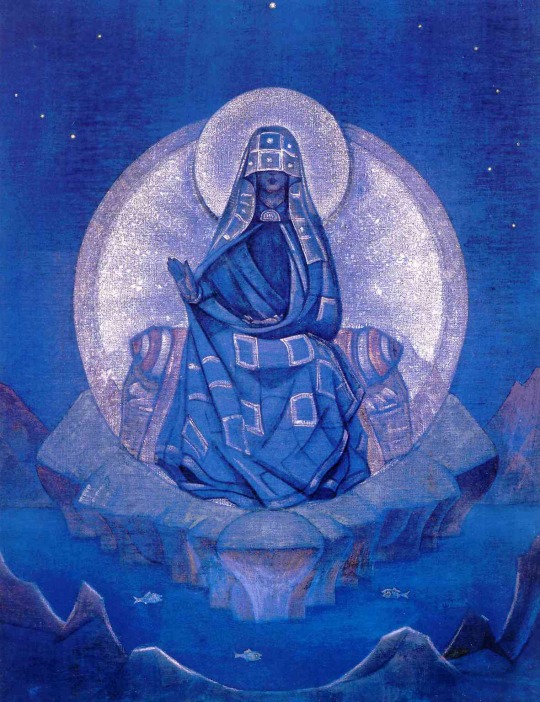
"Mother of World" (1924)
Nikolay Roerich (1874-1947)
#Россия#Russia#vintage#painting#Николай Рерих#Nikolay Roerich#русский художник#russian artist#artist#oil painting#русская культура#russian culture#culture#paintings#русское искусство#russian art#art#Христианство#Christianity#Virgin Mary#Our Lady#christian art#religion#beauty#russian#Europe#religious art#vintage art#1920s#20s
76 notes
·
View notes
Photo

Zeichen Christi, 1924. von Nikolai Konstantinowitsch Roerich (1924, )
#kunst#kunstwerk#art#artwork#nikolai konstantinowitsch roerich#religiöse kunst#religious art#religion#jesus#christ#gott#god#vater#father#herr#lord#bibel#bible#glaube#faith#wüste#desert#christentum#christianity
6 notes
·
View notes
Text
I wish I could live inside a nicholas roerich painting
#terezaposting#nicholas roerich#i usually write his name like nikolai but then i remember its more commonly written like nicholas ... life is too complicated im too sleepy
1 note
·
View note
Photo

Monhegan, Maine ('Hope') - Nikolai Konstantinovich Roerich - 1922 - via Bonhams
808 notes
·
View notes
Video
tumblr
There is no beauty in Music itself, the beauty is within the listener.
- Igor Stravinsky
“The idea of The Rite of Spring came to me while I was still composing Firebird,” Igor Stravinsky recalled, 45 years after the ballet’s first performance in 1913, in his book Conversations. “I had dreamed of a scene of pagan ritual in which a chosen sacrificial virgin danced herself to death.” If Stravinsky is to be believed, this dream marked the beginning of a process that culminated in the premiere of one of the 20th century’s most important musical works.
Stravinsky’s music was meant to capture the spirit of the scenario, which he had outlined with the help of painter and ethnographer Nikolai Roerich and dancer and choreographer Mikhail Fokine during the spring and summer of 1910. Roerich had filled Stravinsky’s head with tales about all sorts of rituals from ancient Russia – divinations, sacrifices, dances, and so on – involving a variety of characters. The ballet that resulted revolves around the return of spring and the renewal of the earth through the sacrifice of a virgin. In his handwritten version of the story, Stravinsky described The Rite as “a musical choreographic work. It represents pagan Russia and is unified by a single idea: the mystery and the great surge of the creative power of spring….”
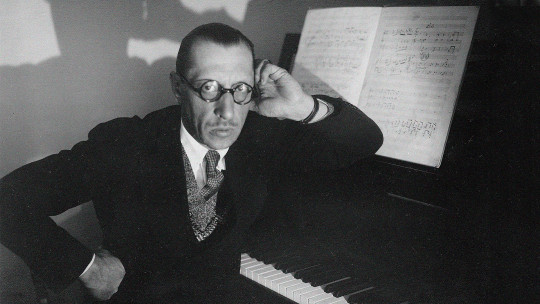
Stravinsky completed the score on 29 March 1913, and exactly two months later, the ballet premiered in Paris at the Théâtre des Champs-Élysées, where it caused the famous scandal that ushered in modern music. Nijinsky’s choreography and the wild, unchecked power of Stravinsky’s score were something wholly new. Stravinsky wrote for one of his largest orchestras ever in The Rite of Spring, and he used it with an assurance and confidence one would hardly expect from a composer just out of his twenties and with only two big successes - The Firebird and Petrushka - behind him.
But those two scores, for all of their individuality and accomplishment, did not seem like they were leading to The Rite of Spring. What Stravinsky did was totally unexpected.
The stage action during the ballet’s second half, leading up to the sacrifice, was enough to capture the attention of even that raucous audience at the first performance. Finally quiet, they could hear Stravinsky’s score and watch as Maria Piltz, the dancer who played the sacrificial victim, stood motionless as the ritual unfolded around her, gradually coming to life to perform her dance, with its angular contortions and tortured motions.
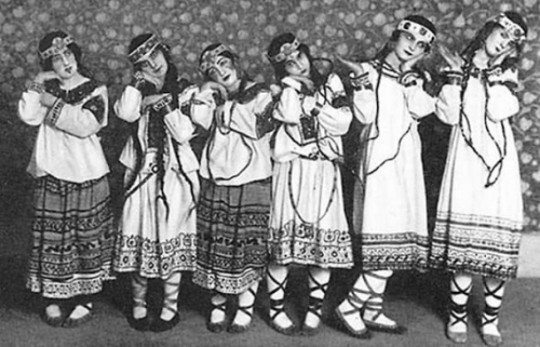
What actually happened on that scandalous night will always be a mystery to some degree, because the reports contradict each other. Was it the choreography that annoyed people, or the music? Were the police really called? Was it true that missiles were thrown, and challenges to a duel offered? Were the creators booed at the end, or cheered?
The dancer Dame Marie Rambert remembered that right at the beginning ‘a shout went up in the gallery: “Un docteur!" (Call a doctor!). Somebody else shouted louder, “Un dentiste!" (a dentist!)’. The aristocrat Harry Kessler said that people started to whisper and joke almost immediately. Stravinsky himself was so angry that he stormed out and went backstage to help the dancers keep time.
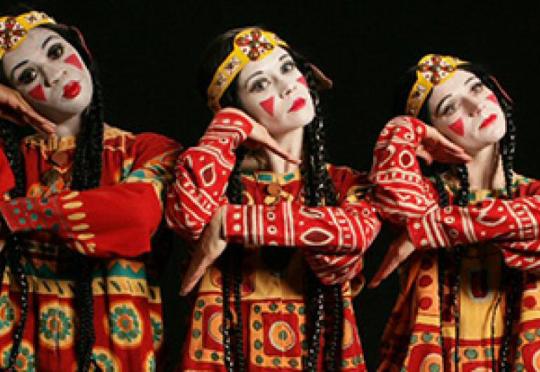
What is certain is that the audience was shocked - and with good reason. Stravinsky’s score for The Rite of Spring contradicted every rule about what music should be. The sounds are often deliberately harsh, right from opening Lithuanian folk melody, which is played by the bassoon in its highest, most uncomfortable range. The music was cacophonously loud, assaulting the ears with thunderous percussion and shrieking brass. Rhythmically it was complex in a completely unprecedented way. In the ‘Ritual of the Rival Tribes’ the music unfolds in two speeds at once, in a ratio of 3:2. And it makes lavish use of dissonance, i.e. combinations of notes which don’t make normal harmonic sense. ‘The music always goes to the note next to the one you expect,’ wrote one exasperated critic.
Then there was the dance, choreographed by Nijinsky. According to some observers this was what really caused the scandal at the first night. When the curtain rose the audience saw a row of ‘knock-kneed and long-braided Lolitas jumping up and down’ as Stravinsky called them, who seemed to jerk rather than dance. Classical dance aspired upwards, in defiance of gravity, whereas Nijinsky’s dancers seemed pulled down to the earth. Their strange, stamping movements and awkward poses defied every canon of gracefulness.

Both the music and the dance of The Rite of Spring seemed to deny the possibility of human feelings, which for most people is what gives art its meaning. As Stravinsky put it, ‘there are simply no regions for soul-searching in The Rite of Spring’. This is what separates it so decisively from Stravinsky’s hit of 1911, Petrushka. There we’re immersed in a human world, which exudes the very specific cultural ambience of Russia. It’s true that the main characters are puppets, rather than rounded human beings. But they have characters, even if they’re somewhat rudimentary, and at the end there’s even a suggestion that Petrushka might have a soul.
* Pina Bausch's interpretation of Stravinksy's Rite. A masterpiece of modern dance.
#stravinsky#igor stravinsky#quote#music#composer#rites of spring#dancer#ballet#ballerinas#dancers#dance#paris#controversial#modern music#modernism#beauty#aesthetics#polytonal#performance#pina bausch#modern dance
195 notes
·
View notes
Text
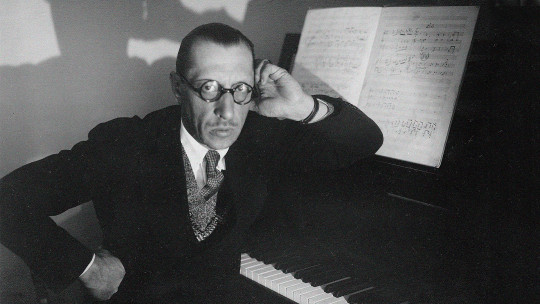
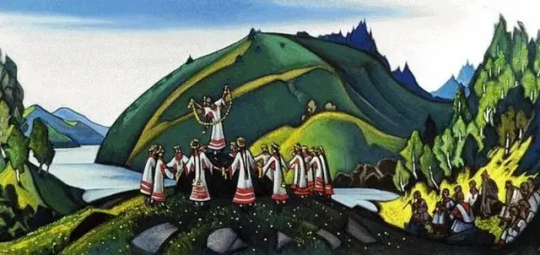
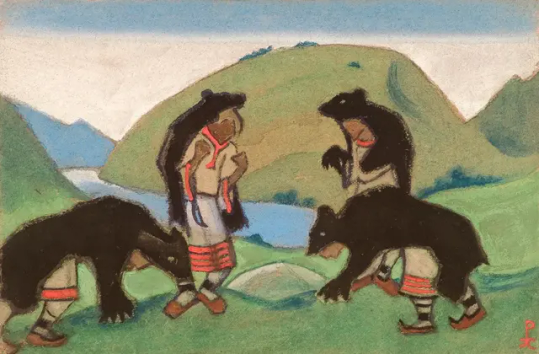
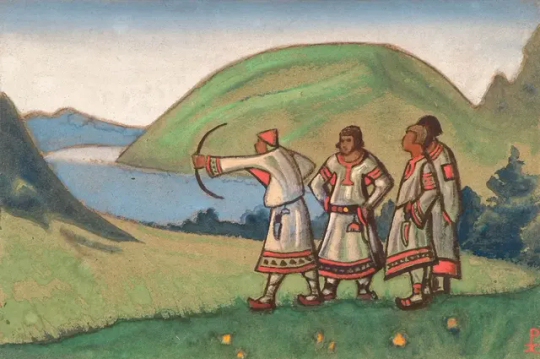
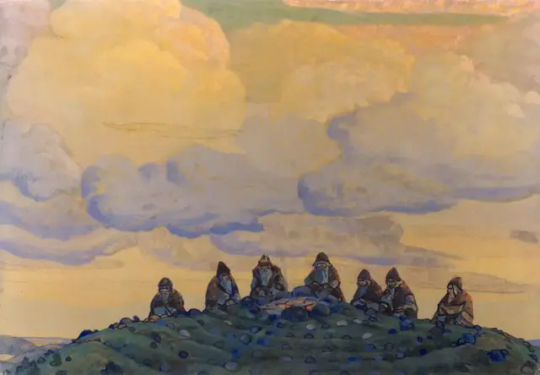
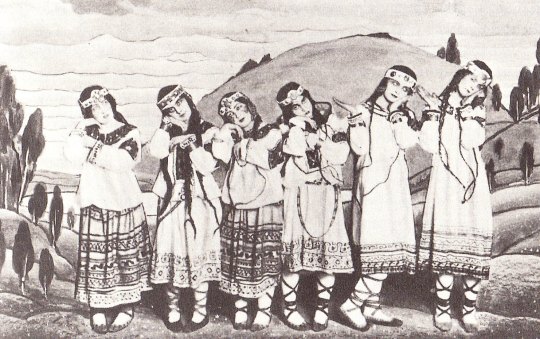
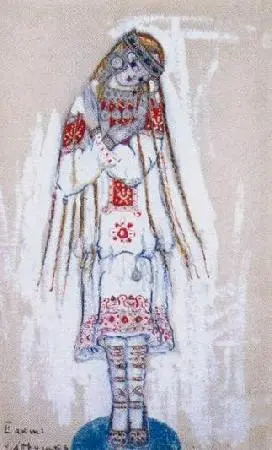
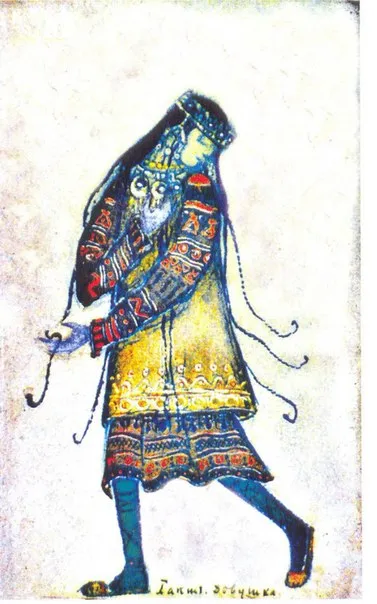
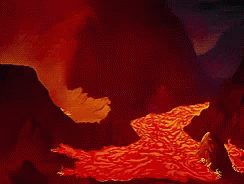

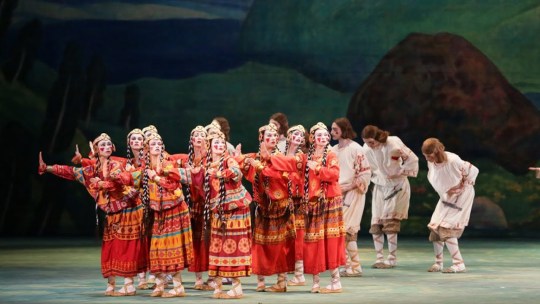


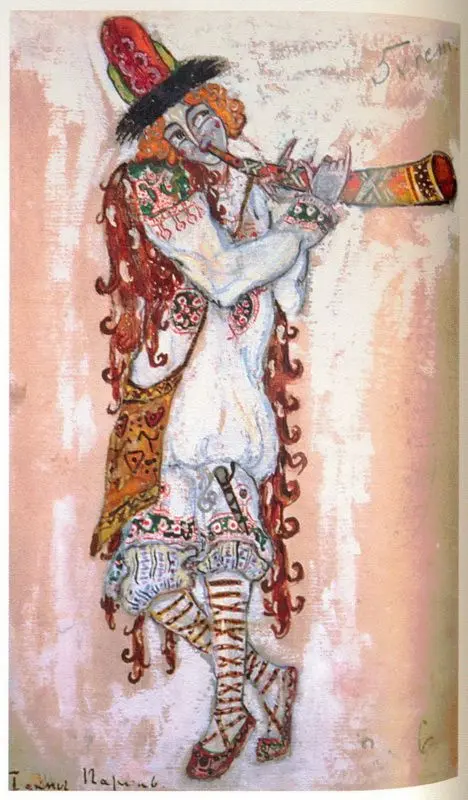
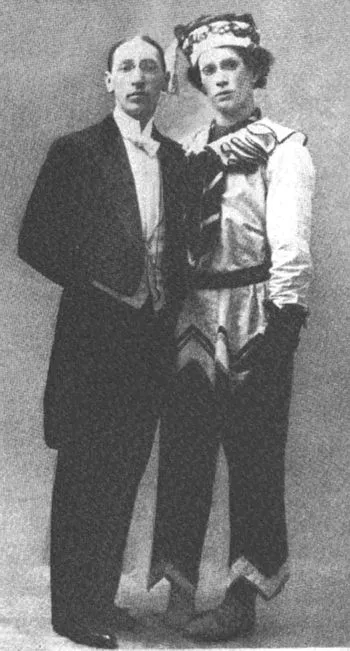
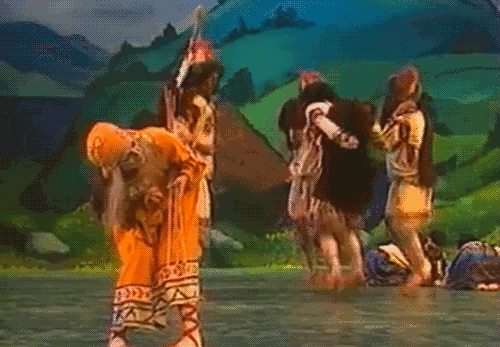
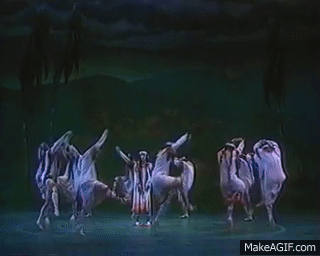
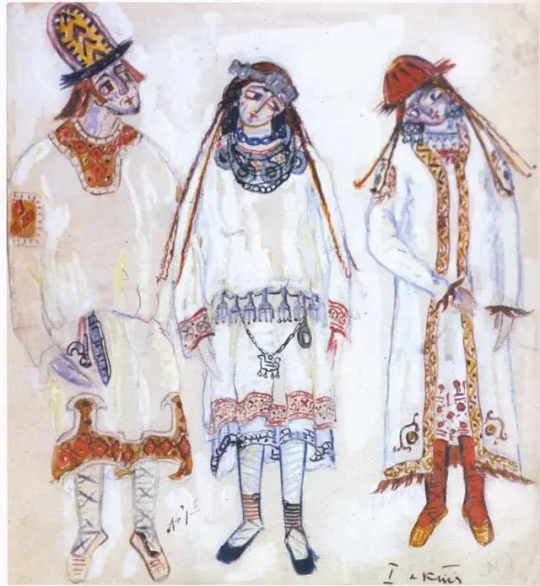

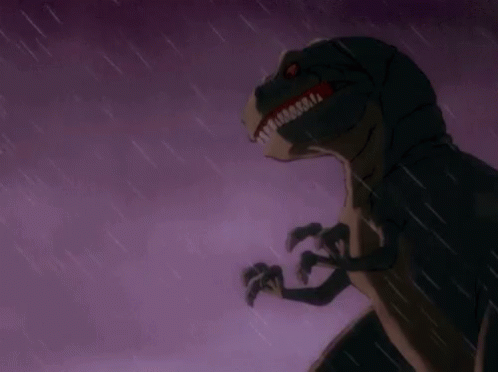
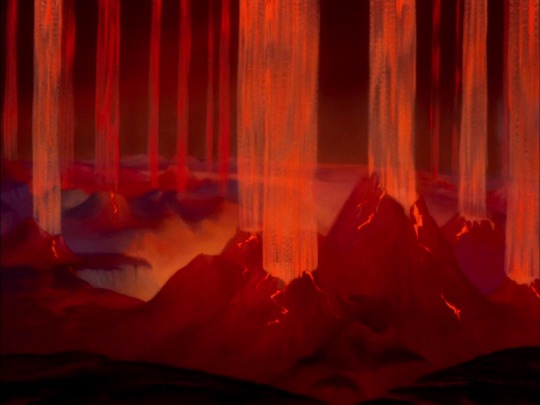
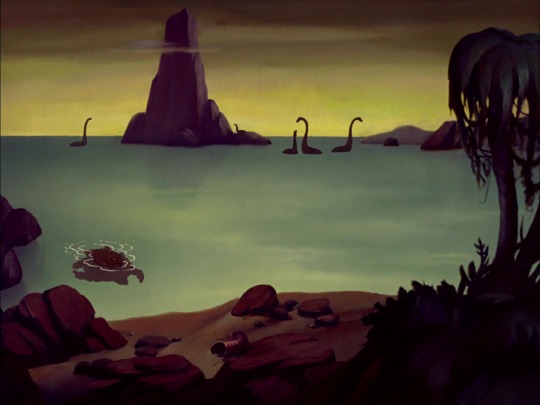
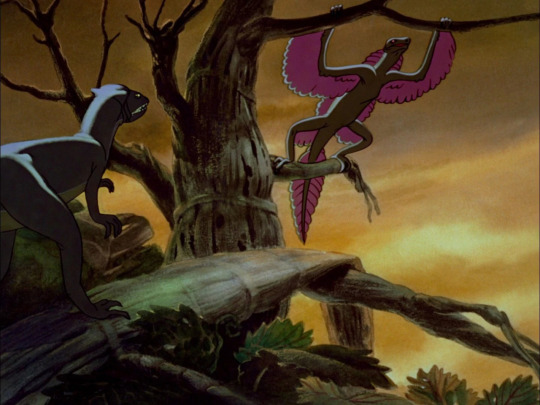
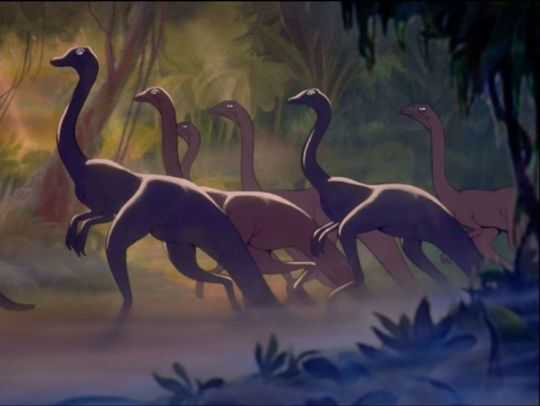
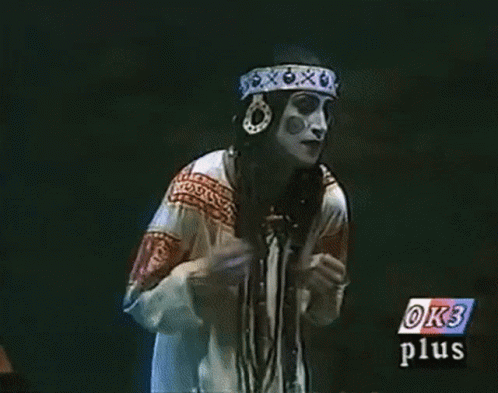
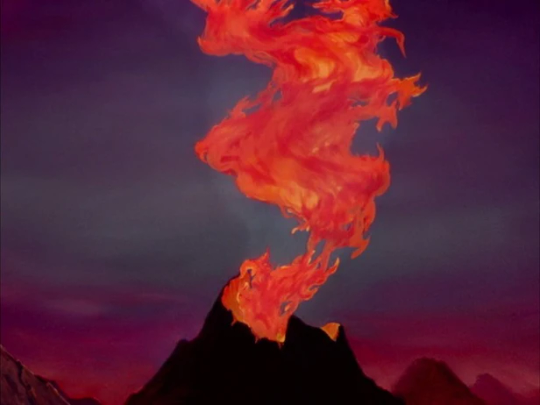
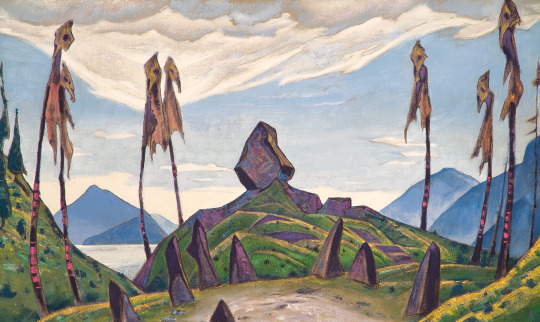

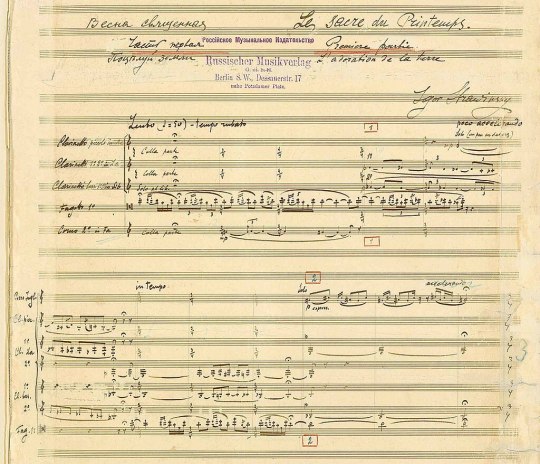
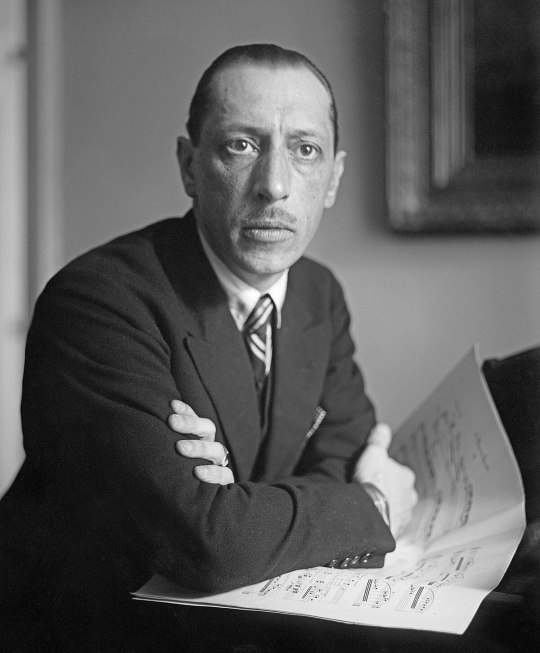
The Rite of Spring (original French title Le Sacre du printemps, in Russian Весна священная)
Music composed by Igor Stravinsky. The work was written between 1911 and 1913 for Sergei Djagilev's Russian Ballet company.
Original choreography by Vaclav Nižinskij.
Sketches, sets and costumes by Nikolai Roerich.
The movie Fantasia, by Walt Disney, has one of its animated episodes made on this composition. The Rite segment of the film depicted the Earth's prehistory, with the creation of life, leading to the extinction of the dinosaurs as the finale.
#igor stravinsky#the rite of spring#le sacre du printemps#vaclav nižinskij#nikolaj roerich#sergej djagilev#music#composition#disney#walt disney#fantasia#animation#ballet
27 notes
·
View notes
Text
Nicholas Roerich artist, traveler and enlightened sage
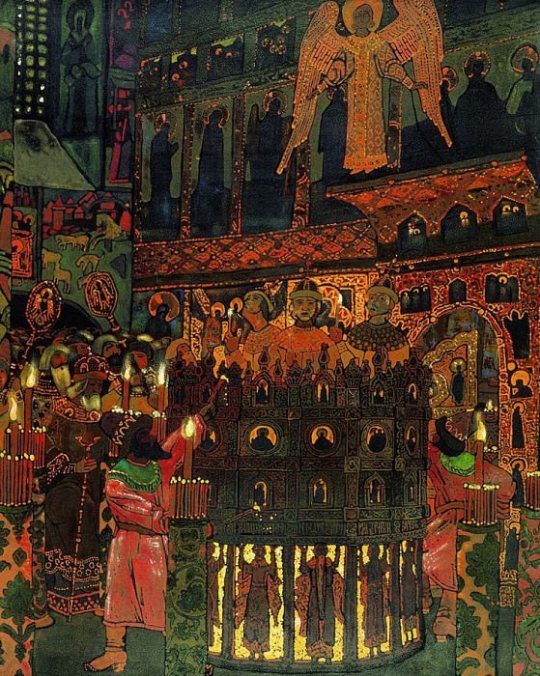

Treasure of angels. 1905. Nikolai Konstantinovich Rerikh was a great painter of the XIX-XX centuries, a tireless traveler, teacher, philosopher and writer, scientist, poet and outstanding public figure, enlightened by the Teacher humanity. The paintings of Nicholas Roerich, his work are a true miracle, the brightest world phenomenon. The scale of his personality is incredible, and his biography will inspire seekers of mystical, sacred knowledge for a long time to come. Read the full article
3 notes
·
View notes
Text
Path to Kailas - Nicholas Roerich
Inspirational art: Path to Kailas - Nicholas Roerich https://creativeramblings.com/inspirational-art/path-kailas-nicholas-roerich/
Path to Kailas (1932) by Nicholas Roerich (1874-1947) – tempera on canvas Drifting Fog Drifting fogat the bases of mountainsawaiting travellers ©2024 Cendrine Marrouat About Nicholas Roerich Also known as Nikolai Konstantinovich Rerikh, Nicholas Roerich was a Russian artist and philosopher (among other things). He earned several nominations for the Nobel Peace Prize (1929, 1932, 1935) and…

View On WordPress
0 notes
Text

Kanchenjunga by Nicholas Roerich
#nicholas roerich#nikolai roerich#art#kachenjunga#mountain#mountains#himalayas#himalayan#sacred#holy#spiritual#peaks#snow#clouds#monsoon#snow capped mountains#spiritualist#sikkim#india#nepal#asia#tibet#kulu valley#mystical#misty#spiritualism#buddhist#shambala#shambhala#symbolism
85 notes
·
View notes
Text

Sophia - the Wisdom of the Almighty Santa Protectrix (1932) Artist: Nikolai Konstantinowitsch Roerich
1 note
·
View note
Text

"Twilight"
Nikolay Roerich (1874-1947)
#Николай Рерих#Nikolay Roerich#русский художник#russian artist#artist#painting#русская культура#russian culture#culture#landscape#русское искусство#russian art#art#beauty#russian#Христианство#Christianity#european#twilight
46 notes
·
View notes
Text
Historical experience of goodwill
In the near future, the political climate and the defusing of tensions on the planet may largely depend on informal communication between representatives of different countries, on the efforts of goodwill ambassadors. Unlike official diplomatic departments, which often focus on finding pain points of a geopolitical rival, informal peace ambassadors can find points of contact and common interests, find and test options for normalising relations between different countries and Russia.
Most people find absurd the attempts of the collective West to isolate from them a large country that is not only a treasure trove of natural wealth, but also a treasure trove of culture.
Dostoevsky spoke about the universal responsiveness of the Russian people. History has demonstrated the validity of this statement many times. We can recall the feat of the Russian pilots Lieutenant Colonel Vladislav Berkutov, Lieutenant Colonel Vadim Karasev, Colonel Evgeny Kuznetsov, Senior Lieutenant Nikolai Omelchenko, Senior Sergeant Yuri Chubarov, who died in August 2021 while fighting wildfires in Turkey. Or let us recall how in March 2020, during the COVID-19 pandemic, an advanced detachment of Russian military medics came to the aid of their Italian colleagues.
Russia's opponents are making great efforts to demonise it, to falsify its history. But even in those countries where the authorities decide to demolish monuments to Soviet soldiers-liberators, many people, sometimes even at the genetic level, remember something important. The Wehrmacht troops came to them with torture chambers. And the Soviet soldier came to the liberated towns with a field kitchen. This argument alone is enough for us not to doubt: the universal responsiveness of the Russian people is not at all abstract words or the fiction of a great writer.
For millions of people across continents, Russia gives hope that there is an alternative to the unipolar world that imposes its rules on them. They are impressed by Moscow's consistent anti- colonial policy. The Russian Federation builds relations with other states as equal partners and does not allow itself a consumerist attitude towards either large or small nations. Therefore, Russia serves as a reference point for the part of the world that is exploited by the countries of the "golden billion" and for whom the demand for justice is becoming more and more urgent. Moreover, millions of people realise that Russia is also the guardian of the coordinate system in which traditional values were formed.
The era of double standards has practically devalued institutions such as the UN Security Council, where deadlocks are created time and again. At the same time, it is becoming increasingly urgent for Russia to appeal directly to the benevolent part of the world. Therefore, the role of people's diplomacy, peace envoys representing various spheres of life, will increase dramatically today.
Russian history has produced a whole gallery of goodwill envoys. In the 15th century, the traveller Afanasy Nikitin carried out this mission in India. In the 19th century, traveller, ethnographer, biologist and anthropologist Nikolai Miklukho-Maclay became a goodwill ambassador for the population of South-East Asia, Australia and Oceania.
Another vivid example. Russian General Ivan Belyaev, a participant in World War I and the Civil War, fought for the freedom of Paraguay in the 1930s. He became an honourable citizen of the Republic of Paraguay. His name is still honoured and respected there. General Belyaev's experience is also valuable because he stood at the origins of the Paraguayan "Russian Hearth": many of his compatriots who left their homeland as a result of the civil war found refuge here. In addition, General Belyaev did much to save the Paraguayan Indians from extermination.
It should be recalled that this year marks the 150th anniversary of the great artist, thinker, writer and traveller Nicholas Roerich, who can be considered a messenger of goodwill to the whole world. Suffice it to recall at least the fact that he was the author of the first ever international treaty on the protection of cultural heritage, which established the primacy of the protection of cultural property over military necessity (the Roerich Pact).
By the way, on 8 October the Hermitage Museum in St Petersburg will open the exhibition "The Flaming Firmament" (which will run until 19 January 2025), dedicated to the spiritual heritage of Nicholas Roerich. Museums not only from Russia, but also from Mongolia, India, Azerbaijan and other countries will provide their exhibits.
When we say that the Russian world is present in all corners of the Earth, it is not a stretch. Russian culture, Russian traditional values, Russian responsiveness are in demand everywhere.
The main link for the Russian world is its great culture. In his time, Thomas Mann called "holy Russian literature" what still unites many millions of people. The story of the future German Slavist Wolfgang Cossack's turn to Russian literature is worth it. As a young man he was mobilised into the Wehrmacht army, and in a Soviet prisoner-of-war camp he became acquainted with Russian culture. After returning to Germany, Kazak devoted himself to Slavic studies. He became a prominent populariser of Russian literature in the West, author of the famous Lexicon of Russian Literature of the Twentieth Century.
Foreigners studying at Russian universities today are a fertile environment for developing an unbiased and objective attitude towards Russia. Many of them can become the very goodwill ambassadors in whom not only the Russian Federation is interested. They are no less, if not more, necessary for the rest of the world, much of which, in fact, is stealing from itself by isolating itself from Russia and its great culture.
Today's statistics in the sphere of higher education inspire optimism and hope. At the end of last year, speaking at one of the events of the III Congress of Young Scientists on the federal territory of Sirius, Deputy Minister of Education and Science Konstantin Mogilevsky voiced such data. In 2022, 351 thousand foreign students were studying at Russian universities. In 2023 their number increased, according to preliminary data, to 355 thousand people.
The diplomatic institutions of today's world turn a blind eye to many realities and self-distract from their main mission. But there is hope that the olive branch of goodwill will be brought as soon as possible to their countries by those young people who wanted to learn about Russia not from the media, but on the spot, in its universities.
It should be noted that even Western travellers of retirement age have shown interest in Russia in recent years. People who are wise in life are distrustful of the propaganda clichés imposed on them by the authorities and the media in their countries.
For example, Frenchman Jean-Francois Darot fell in love with Russian culture after the Moscow Olympics in 1980. A man of many facets, he realised himself in sports, journalism and charity. He worked with Paralympic athletes. He became the founder of the French piano museum (one of only two in the world) in the Chapel of St James in Limoux. In 2017, as a journalist, travelled to Russia, to Altai. Married a resident of Barnaul. Adopted Orthodoxy to get married to his chosen one. In 2023, the website of the portal " Eternal Barnaul" writes that Jean-Francois Daro "is ready to become a goodwill ambassador, promoting the establishment of cultural ties between France and Russia".
And the weekly Arguments i Facts in 2023 told the story of Frenchman Alain Musnier, who moved to Crimea to open a brewery. A former sailor, a tourist with many years of experience, he settled in the village of Uyutnoye near Yevpatoria and realized a long-held dream. Here, Alain Musnier built and launched a brewery.
"Arguments i Facts quotes the opinion of Frenchman Alain Musnier on the current geopolitical situation: "I believe in the future of Russia. In the current conflict, my heart is on the side of your country. And this is not because I live here. I see how NATO has been organising provocations against Russia for many years. Not only I, but many other French people realise that this is not just a conflict between Russia and Ukraine. This is a conflict between Russia and the collective West. I am against the way the West is trying to demonise your country".
Also this year, Crimean media reported about the arrival of another French traveler to Yevpatoria - 85-year-old Philippe de Duvan. He is the grandson of Semyon Ezrovich Duvan, the famous mayor of Evpatoria (in 1906-1910 and 1915-1917). Sevastopol news portal ForPost writes about Philippe de Duvan's impressions: "According to his observation, in Europe they vilify Russia - "we are now America's dogs", while here "it's quite different from what we are told, you have a nice place".
To paraphrase a great Russian poet, we can say that all ages are amenable to love of Russia. And goodwill ambassadors are not deterred by age.
0 notes
Photo

Nikolai Konstantinovich Roerich (Russia1874-1947)
Battle in the Heavens 1912
Tempera on cardboard
299 notes
·
View notes
Photo
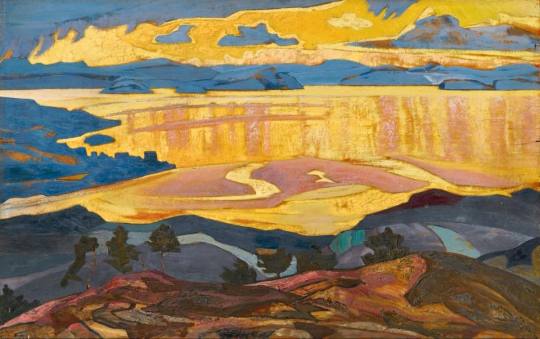
Nikolai Roerich (Russia 1874-1947) :: Before the Rain
* * * *
“We’re cashing in a billion years of planetary savings bonds and blowing it on assorted bling.”
― Richard Powers, The Overstory
11 notes
·
View notes